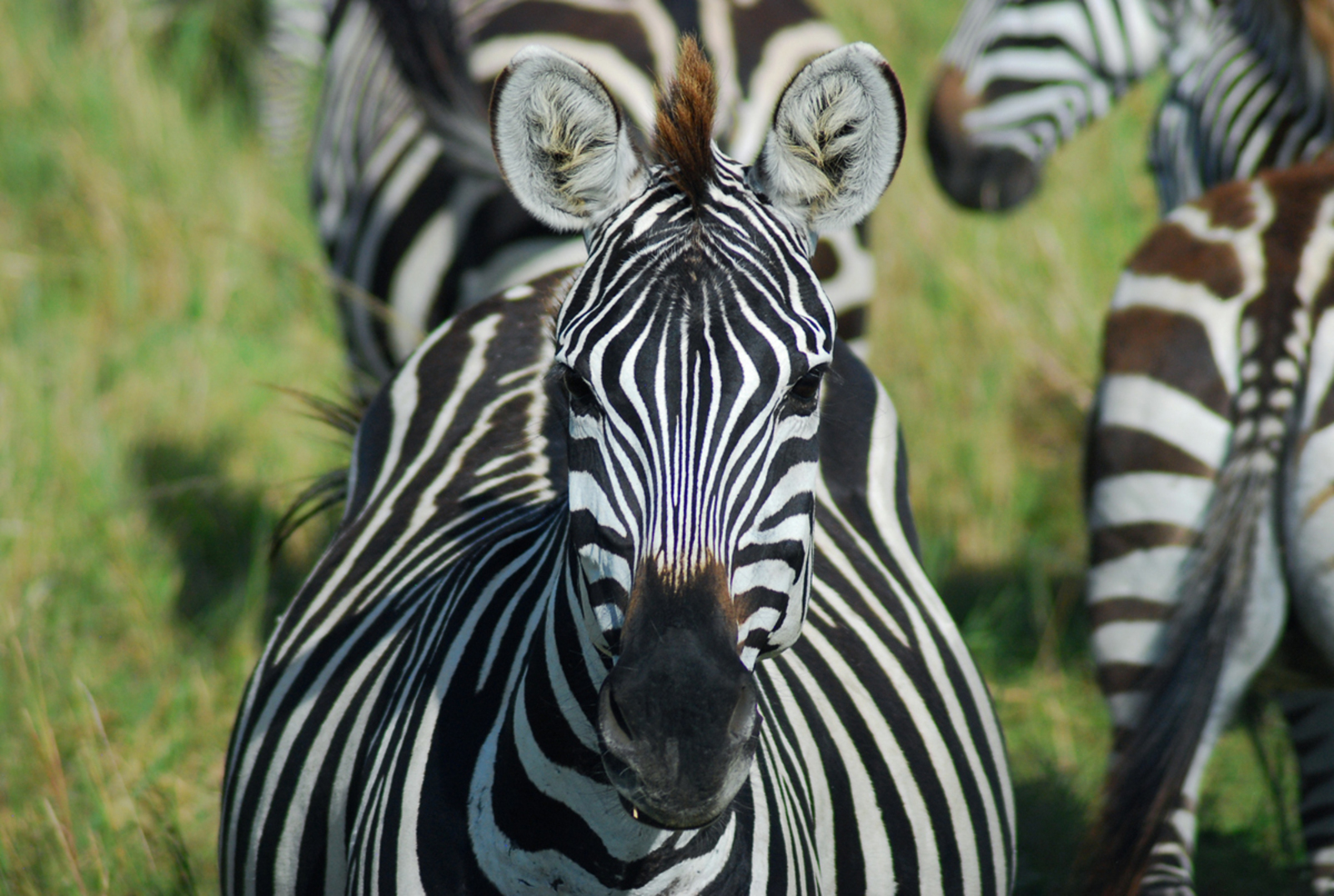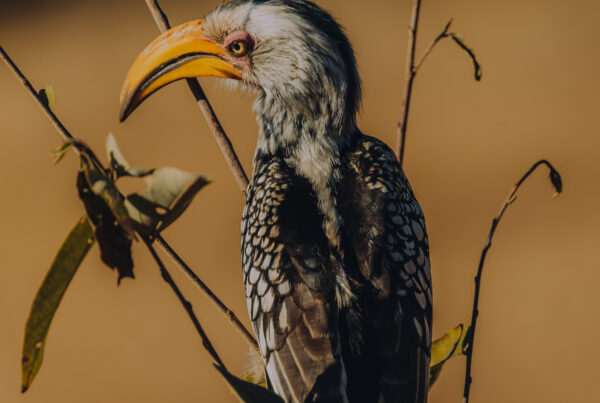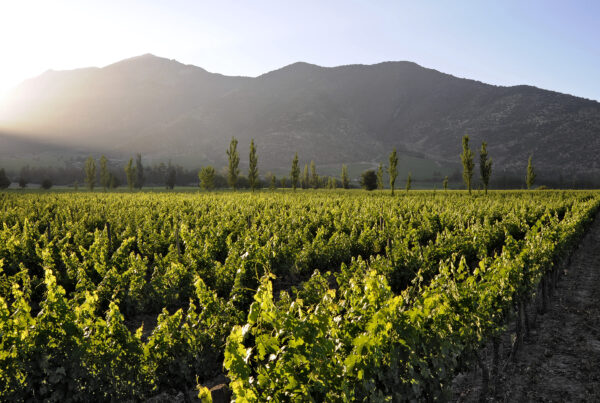Flying around beautiful Tanzania on a unique, 8 day adventure.
By: Karen Day
On the fifth day of safari, Tanzania’s vastness really hits me. It happens mid-flight on our journey between parks, as the steep verticals of the Rift Valley fade in the distance and the enormity of the Serengeti plains creeps into view. Tanzania, just south of the equator along Africa’s east coast, is larger than the state of Texas. In fact—at 365,756 square miles—it’s geographically the size of Texas and Wyoming combined. But while the expansive landscape is stupefying, it’s not the only thing that makes you feel tiny in Tanzania; the profound variety of animals and insects you meet at almost every turn serves as a beautiful reminder that out here in the bush, you play but a small part in the circle of life.

These moments—of feeling humbled by this undisturbed natural environment—are curiously addictive. Thankfully, on safari, they’re available in surplus. Like the evening we watch a lone elephant make its way across the Tarangire as we sit perched on a cliff, enjoying a sundowner. Or when we realize just how keen an eye a Maasai warrior really has, when, on a night drive through a wildlife management area, he spots a chameleon snugged up in a tree with no more help than that of a flashlight. And when we notice zebra remains hanging from an acacia tree with a satisfied leopard guarding it from a tree nearby, we see survival of the fittest defined.

Obviously, the more terrain you cover, the more you see. In our experience, the ultimate way to accomplish this is via Elewana Collection’s unique eight-day SkySafari. Thanks to the convenience of a private Cessna plane and their thoughtful schedule, you can take in more of Tanzania’s jaw-dropping greatness in fewer days. (The average safari is between 10 and 14 days.) The plane picks you up and drops you off right in the middle of the bush, where Elewana’s expert guides are there waiting, eager to show you an abundance of wildlife.

That’s not to say there isn’t time for reflection. In part two of our SkySafari coverage we’ll highlight Elewana’s environmentally forward-thinking properties, each with its own vibe and activities. (Albeit always with indulgent accommodations, WiFi and a swimming pool.) As a company that abides by the motto “living in harmony with Africa,” Elewana works hard to ensure that both you and the animals are living the good life and their properties wholly demonstrate a great deal of careful considerations.
First, a look at the parks visited on an Elewana SkySafari.

Tarangire National Park
Fondly dubbed by locals as “Elephant City,” the Tarangire is teeming with the massive, wrinkly creatures. And thanks to the Tarangire River (the area’s permanent water source) the 1,100-square-mile protected park is also home to lions, giraffes, several types of antelopes (impalas, dik-diks and Thomson’s gazelles are a common sighting), snakes, warthogs, butterflies and all kinds of colorful birds. (There are over 500 species in the Tarangire; we saw guineafowl, storks, ostriches, rufous-tailed weavers, hamerkops, various hornbills, eagles and more.) Add to that a picturesque panorama where acacias, sausage trees, candelabra trees, and 2,000-year-old baobab trees dot the tall savannah grasses. Here, staring at elephants to the sound of Swahili coming over the radio is an experience only rivaled by an afternoon bush walk with a Maasai.

Ngorongoro Conservation Area
As one of only 32 mixed World Heritage sites (places that meet both cultural and natural criteria) and home to one of the largest intact calderas on Earth, theNgorongoro Conservation Area is where you can spot the extremely rare black rhino, see dazzles of zebras and where you’ll patiently wait to move your vehicle for fear of disturbing the sleeping lion napping next to the rear wheel. Your eyes won’t believe the microcosm of herbivores and carnivores visible to one another yet living (most days) in peaceful coexistence—from pink flamingos to wildebeests to the Maasai, the only people permitted to live inside the NCA. The Rift Valley escarpment is extraordinarily green, and makes a brilliant backdrop for the vivid wildlife living within it.

Lake Manyara National Park
Tanzania’s second oldest national park, Lake Manyara is also its third smallest, but what it lacks in size it makes up for in its dense terrain. Sweeping khaki-colored landscapes are replaced here by a lush, jungle-like refuge filled with wild baboons, grazing hippos, regal grey-crowned cranes and insects—like the insanely bright red dragon fly that stops us in our tracks. It’s no surprise that the area’s beauty inspired Ernest Hemingway to declare Lake Manyara as “the loveliest I had seen in Africa.”

Serengeti National Park
The Serengeti is undoubtedly the pinnacle of all of Tanzania’s national parks. The name is taken from the ancient Maasai word for the land, Siringet, which means endless open plains. And it does feel endless. But the holy grail of the Serengeti is not challenging your eye against the horizon line, it’s witnessing what’s known as The Great Migration. Every year, millions of wildebeests and zebras travel 500 miles, from the southern part of the ecosystem to the north, in search of water and fresh grazing. It’s utterly fascinating to see such large animals become a mass of flecks in the distance, giving off the appearance of ants marching across the land. As aUNESCO World Heritage Site, though, Serengeti wildlife extends well beyond wildebeests and zebras. Leopards, lions, cheetahs, crocodiles, hyenas, topis, imapalas, buffalos, hyrax (tiny weasel-like animals that are oddly related to the elephant), giraffes and an array of birds lay claim to the 5,700 square miles of breathtaking savannah.

Images by Karen Day




